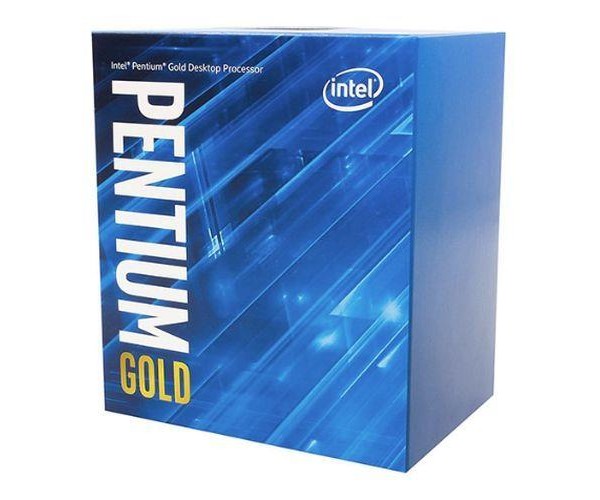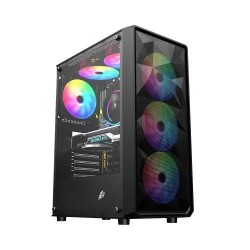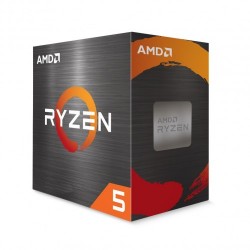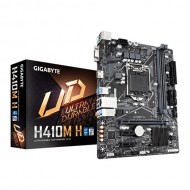Intel Pentium Gold G6400 10th gen Coffee Lake Processor
Intel Pentium Gold G6400 10th gen Coffee Lake Processor comes with a new breed that has an integrated GPU, so a separate graphics card is not required for its functionality. This new 10th gen Comet Lake microarchitecture is manufactured with the 14nm process that comes with two cores and Hyper Threading. As this chip is updated to the latest BIOS revision, it nicely fits into any Intel 300-series motherboard. Focusing on this, all the major motherboard manufacturers have already started BIOS updates for their 300-series lineup
Core Benefits of the Processor
Intel 10th Generation Intel Pentium Gold G6400 Processor having the base frequency of 4.00 GHz. It has the L3 SmartCache of 4 MB containing 2 cores and 4 threads. With the bus speed of 8 GT/s DMI, it has thermal design power (TDP) rating of 58W. This latest microchip has few expansion options such 3.0 PCI express revision having configured up to 1×16, 2×8, 1×8+2×4 and maximum 16 lanes. Considering the memory this processor has dual channel of max 128 GB of size that supports up to DDR4-2666 bus speed.
Advanced Facilities
On the process of advance technology this processor has 2.0 Intel turbo boost and Intel virtualization that is directed to I/O (VT-d). This Optane Memory supported chip also has Intel VT-x with extended page tables (EPT). Furthermore, Enhanced Intel Speed Step and Intel Identity Protection Technology are integrated to increase its efficiency.
performance
Intel did not design the Pentium Gold G6400 for gaming, and it should come as no surprise that the Intel UHD Graphics 610 IGP performs quite poorly in reference values when running without a video card installed …
The higher clock speed and Hyper-Threading support allowed the G6400 to knock out the Celeron G4920 using the same IGP silicon. It is the Pentium G6400’s only victory, as everything else in this party beats it by a strong margin. Even the latest generation Pentium Gold we tested, with a slightly more muscular UHD Graphics 630, surpassed the G6400. It really is not much of a win, even when you consider that only one of these games (CS: GO) was technically playable on Pentium Gold, and that with the resolution turned down to 720p and the graphics settings of Medium.
Intel Pentium Gold G6400 Review
Intel’s 2020 introduction of the LGA1200 desktop platform has been an interesting entry for PC builders and upgrades to weigh. The 10th generation Intel desktop processors delivered increased performance over the outgoing LGA1151 platform, pushing chips like the Core i9-10900K to the forefront, with 10 cores and turbo speeds above 5 GHz. But not everyone needs a jet-fuel CPU, and the 10th generation Intel, which will soon be enhanced by 11th generation “Rocket Lake” chips, runs all the way down to the humdrum Celerons, and the Pentium Gold G6400, a quiet coup of around $ 65. Although the chip does not stand out from the latest generation Pentium listings, the new one will be prominent here in early 2023.
Before I look at the specifications of this modest processor, I should make it clear that this chip is not too much new, either here in 2021 (it was introduced in mid-2020) or when you look at it against the generation before it. It’s virtually identical to the Pentium G5000 series processors that are still available (if you hunt a bit for them) for Intel’s outgoing LGA1151 platform. As you will see later in the reference index in this review, it also performs much the same as the older chips.
Finally, you may be wondering why you should consider the Pentium Gold G6400 at all, if it is the same as Intel’s latest generation Pentiums. In fact, if you have a compatible LGA1151 motherboard, you will not get nearly enough raw performance with a new LGA1200 card and the latest Pentium Gold to make it worth the trouble. For the most part, these components should be viewed in the same way, and when you decide between the two, it can come down to which motherboard and CPU you can get at the lowest price (or what hardware you already own).
The only definite benefits of buying one of these newer Pentiums come from the motherboard you use, as there may be some notable component-level improvements there. Many OEMs have chosen to use 2.5 Gbit Ethernet controllers on their better LGA1200 motherboards, for example, which provides a nice upgrade over the single-gigabit controllers that were ubiquitous on LGA1151 cards. Having an LGA1200 card also means you will be able to upgrade to an advanced processor down the road, such as the top-end Core i9-10900K or probably one of the upcoming 11th generation Rocket Lake chips.


















